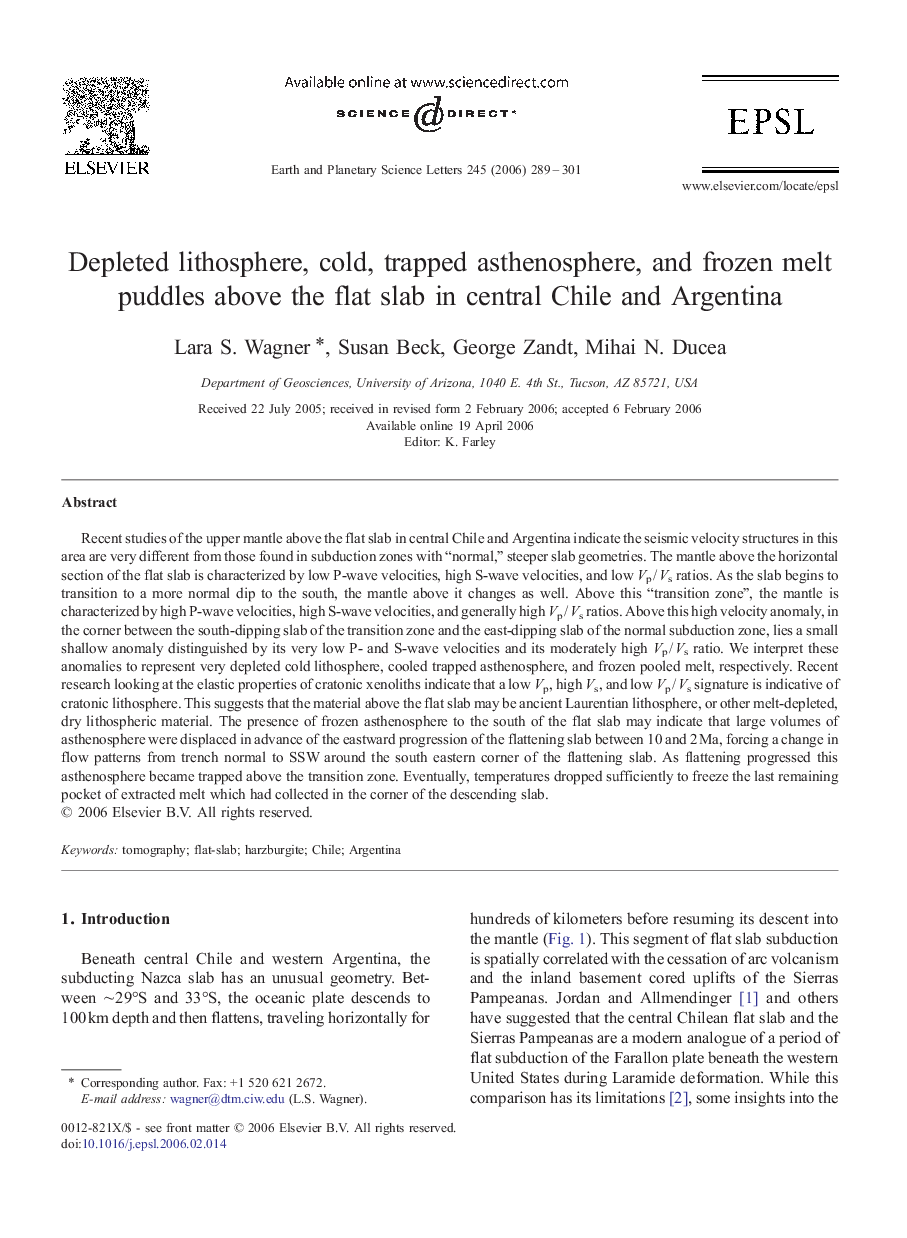| کد مقاله | کد نشریه | سال انتشار | مقاله انگلیسی | نسخه تمام متن |
|---|---|---|---|---|
| 4681112 | 1634945 | 2006 | 13 صفحه PDF | دانلود رایگان |

Recent studies of the upper mantle above the flat slab in central Chile and Argentina indicate the seismic velocity structures in this area are very different from those found in subduction zones with “normal,” steeper slab geometries. The mantle above the horizontal section of the flat slab is characterized by low P-wave velocities, high S-wave velocities, and low Vp / Vs ratios. As the slab begins to transition to a more normal dip to the south, the mantle above it changes as well. Above this “transition zone”, the mantle is characterized by high P-wave velocities, high S-wave velocities, and generally high Vp / Vs ratios. Above this high velocity anomaly, in the corner between the south-dipping slab of the transition zone and the east-dipping slab of the normal subduction zone, lies a small shallow anomaly distinguished by its very low P- and S-wave velocities and its moderately high Vp / Vs ratio. We interpret these anomalies to represent very depleted cold lithosphere, cooled trapped asthenosphere, and frozen pooled melt, respectively. Recent research looking at the elastic properties of cratonic xenoliths indicate that a low Vp, high Vs, and low Vp / Vs signature is indicative of cratonic lithosphere. This suggests that the material above the flat slab may be ancient Laurentian lithosphere, or other melt-depleted, dry lithospheric material. The presence of frozen asthenosphere to the south of the flat slab may indicate that large volumes of asthenosphere were displaced in advance of the eastward progression of the flattening slab between 10 and 2 Ma, forcing a change in flow patterns from trench normal to SSW around the south eastern corner of the flattening slab. As flattening progressed this asthenosphere became trapped above the transition zone. Eventually, temperatures dropped sufficiently to freeze the last remaining pocket of extracted melt which had collected in the corner of the descending slab.
Journal: Earth and Planetary Science Letters - Volume 245, Issues 1–2, 15 May 2006, Pages 289–301